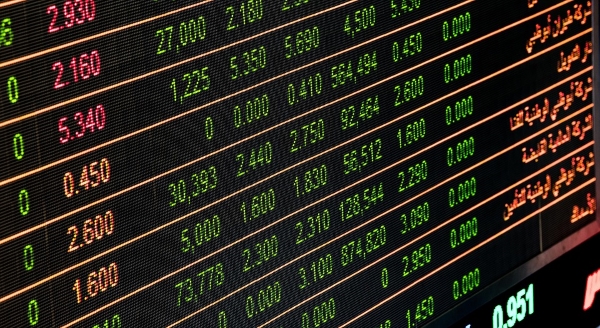

Creating a machine learning algorithm to predict the future stock price of a given stock. We will use an example with walmart dataset to create machine learning algorithm.
There are several types of machine learning that we can use such as:
First we import the libraries that we will use:
import matplotlib.pyplot as plt
import seaborn as sns
import numpy as np
import pandas as pd
import sklearn.linear_model
import sklearn.metrics
import sklearn.preprocessing
import sklearn.pipeline
import sklearn.datasets
import warnings
warnings.filterwarnings("ignore")
sns.set()
We then read the csv file for walmart stocks dataset and use head() to view the first 5 records to get an insight. From the table below it shows that there are 2829 records since 2012 to 2023. There are also 6 columns which are Date, Close, Open, High, Low and Volume.
df = pd.read_csv("../Project_2/walmart_stock.csv")
num_rows, num_cols = df.shape
print("Number of rows: ", num_rows)
print("Number of columns: ", num_cols)
Number of rows: 2829 Number of columns: 6
print(df.head(),"\n")
summary = df.describe()
print(summary)
Date Close Open High Low Volume
0 3/1/2012 $60.33 $59.97 $61.06 $59.87 12,668,774
1 4/1/2012 $59.71 $60.21 $60.35 $59.47 9,593,915
2 5/1/2012 $59.42 $59.35 $59.62 $58.37 12,768,202
3 6/1/2012 $59.00 $59.42 $59.45 $58.87 8,069,504
4 9/1/2012 $59.18 $59.03 $59.55 $58.92 6,679,713
Date Close Open High Low Volume
count 2829 2829 2829 2829 2829 2829
unique 2829 2279 2240 2262 2257 2829
top 3/1/2012 $73.51 $74.84 $69.24 $74.51 12,668,774
freq 1 5 5 6 6 1
We can then find the datatype for each column and note that each are in string (object) type.
data_types = df.dtypes
print(data_types)
Date object Close object Open object High object Low object Volume object dtype: object
As we can see the data is in string (object) datatype, we can change the Date to date datatype and the others as float datatype as below
# Convert the 'Date' column to datetime format
df['Date'] = pd.to_datetime(df['Date'])
# Remove dollar sign and extra spaces from 'Close' column
df['Close'] = df['Close'].str.replace('$', '').str.strip()
df['Open'] = df['Open'].str.replace('$', '').str.strip()
df['High'] = df['High'].str.replace('$', '').str.strip()
df['Low'] = df['Low'].str.replace('$', '').str.strip()
# Remove commas from 'Volume' column
df['Volume'] = df['Volume'].str.replace(',', '')
# Convert the other columns to float format
df['Close'] = df['Close'].astype(float)
df['Open'] = df['Open'].astype(float)
df['High'] = df['High'].astype(float)
df['Low'] = df['Low'].astype(float)
df['Volume'] = df['Volume'].astype(float)
# Check the data types of the columns
print(df.dtypes)
Date datetime64[ns] Close float64 Open float64 High float64 Low float64 Volume float64 dtype: object
df.head()
| Date | Close | Open | High | Low | Volume | |
|---|---|---|---|---|---|---|
| 0 | 2012-03-01 | 60.33 | 59.97 | 61.06 | 59.87 | 12668774.0 |
| 1 | 2012-04-01 | 59.71 | 60.21 | 60.35 | 59.47 | 9593915.0 |
| 2 | 2012-05-01 | 59.42 | 59.35 | 59.62 | 58.37 | 12768202.0 |
| 3 | 2012-06-01 | 59.00 | 59.42 | 59.45 | 58.87 | 8069504.0 |
| 4 | 2012-09-01 | 59.18 | 59.03 | 59.55 | 58.92 | 6679713.0 |
We then plot a scatter plot to see the daily price of walmart stock
%matplotlib inline
# Set the figure size to (10, 5)
plt.figure(figsize=(10, 5))
# Create a scatter plot
plt.scatter(x=df["Date"], y=df["Close"])
# Add labels to the x and y axis
plt.xlabel("Date")
plt.ylabel("Close")
plt.title("Walmart Daily Stock Price by Year")
# Show the plot
plt.show()
We then choose our linear regression model
from sklearn.linear_model import LinearRegression
model = LinearRegression(fit_intercept=True)
model
LinearRegression()In a Jupyter environment, please rerun this cell to show the HTML representation or trust the notebook.
LinearRegression()
x=df["Date"]
y=df["Close"]
print("Shape of x: {}".format(x.shape))
print("Shape of y: {}".format(y.shape))
Shape of x: (2829,) Shape of y: (2829,)
We then change the shape of x to 2D array
x = x[:,np.newaxis]
print("Shape of x: {}".format(x.shape))
print(x[:5])
Shape of x: (2829, 1) [['2012-03-01T00:00:00.000000000'] ['2012-04-01T00:00:00.000000000'] ['2012-05-01T00:00:00.000000000'] ['2012-06-01T00:00:00.000000000'] ['2012-09-01T00:00:00.000000000']]
Fit the model to our data
model.fit(x, y)
print(model.intercept_)
print(model.coef_)
-281.12770289450333 [2.51298187e-16]
yfit = model.predict(x.astype(float))
plt.scatter(x, y);
plt.plot(x, yfit, color='red');
Then, we check the R-squared value
from sklearn.metrics import r2_score
r2_score(y_true=y, y_pred=yfit)
0.7885782082995971
def adj_r2(ytrue, ypred, N, p):
return 1- ((1-r2_score(ytrue, ypred))*(N - 1))/(N - p - 1)
adj_r2(y, yfit, N=len(y),p=x.shape[1])
0.7885034216735977
Any R2 value less than 1.0 indicates that at least some variability in the data cannot be accounted for by the model (e.g., an R2 of 0.5 indicates that 50% of the variability in the outcome data cannot be explained by the model). So from the value of 0.78 then it means that the independent variables explain 70% of the variation in the target variable.

Another method that we can use is the Time Series Analysis machine learning. We can use this model to predict future stock prices below. From the model, we predicted that Walmart stock price for 2023-04-10 will be $141.20
import pandas as pd
from sklearn.model_selection import train_test_split
from sklearn.linear_model import LinearRegression
# Load the data into a pandas DataFrame
data = pd.read_csv("../Project_2/walmart_stock.csv")
# Remove dollar sign and extra spaces from 'Close' column
data['Close'] = data['Close'].str.replace('$', '').str.strip()
# Convert the other columns to float format
data['Close'] = data['Close'].astype(float)
# Convert the 'Date' column to a datetime format
data['new_Date'] = pd.to_datetime(data['Date'])
# Set the 'Date' column as the index
data.set_index('new_Date', inplace=True)
# Split the data into training and testing sets
X = data.index.astype(int).values.reshape(-1,1)
y = data['Close'].values
X_train, X_test, y_train, y_test = train_test_split(X, y, test_size=0.2, random_state=42)
# Create a linear regression model
reg = LinearRegression()
# Fit the model to the training data
reg.fit(X_train, y_train)
# Predict the test data using the model
y_pred = reg.predict(X_test)
# Evaluate the model using the R-squared value
r2_score = reg.score(X_test, y_test)
print('R-squared:', r2_score)
#Input a future date to predict the stock price
future_date = '2023-04-10'
future_date_int = pd.to_datetime(future_date).value
#Predict the stock price using the model
future_price = reg.predict([[future_date_int]])
print(f"The predicted stock price for {future_date} is ${future_price[0]:,.2f}")
R-squared: 0.786880531024917 The predicted stock price for 2023-04-10 is $141.20
import matplotlib.pyplot as plt
# Create a scatter plot of the test data and predicted values
plt.scatter(X_test, y_test, color='black')
plt.plot(X_test, y_pred, color='blue', linewidth=3)
# Add labels and title to the plot
plt.xlabel('Date')
plt.ylabel('Close Price')
plt.title('Linear Regression Model')
# Show the plot
plt.show()
So we can conclude from the machine learning algorithm that Walmart stock price will continue to increase in price year by year based on the analysis of stock price from 2012 to 2023. Investment analyst can then use this model to make business decision on whether to invest into Walmart. Although, do note that there are more variables that need to consider before making any decisions. As the people in Finance say, NFA (Not Financial Advice).
In the future, I will develop the machine learning by using SVM and ANN method.
